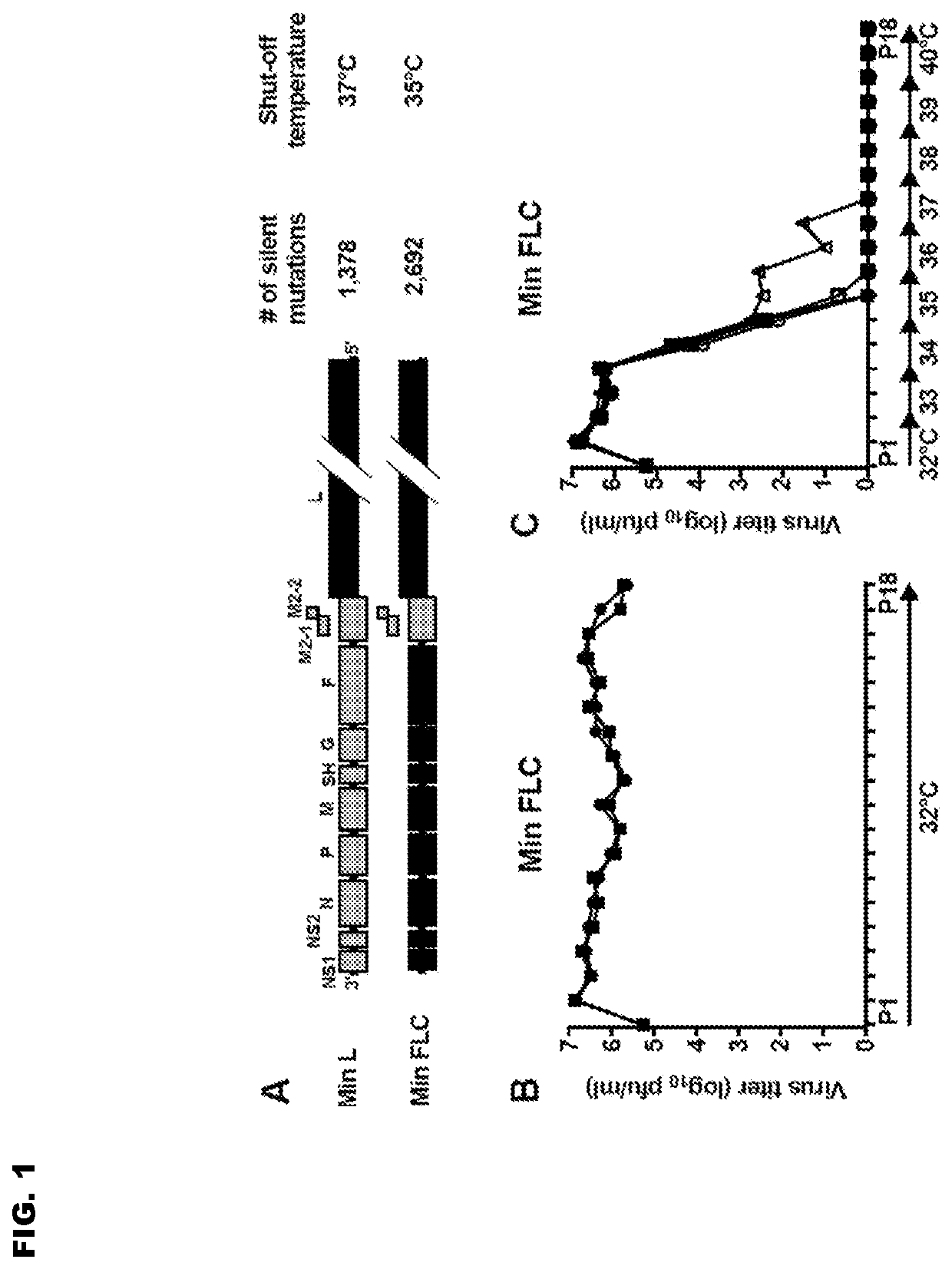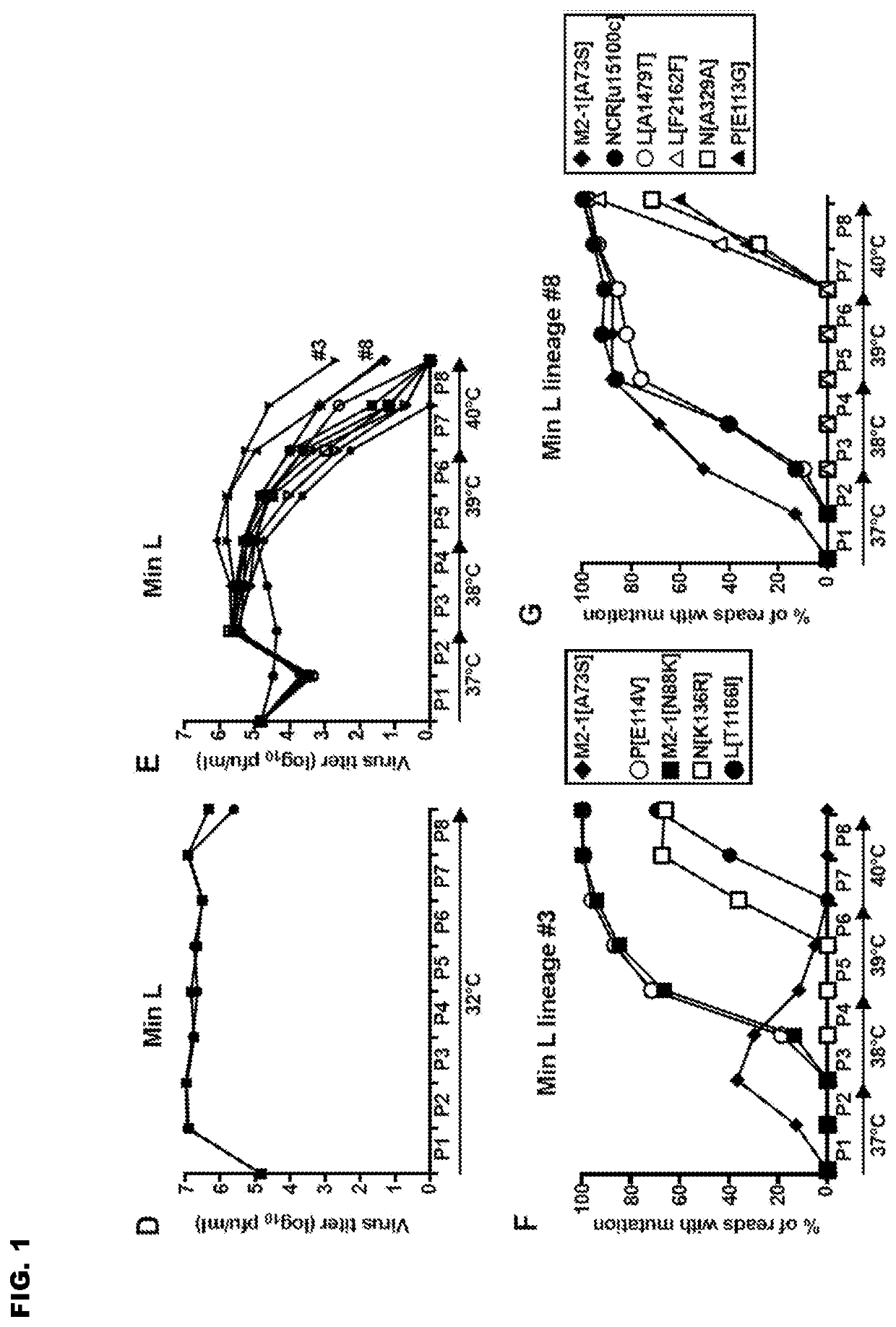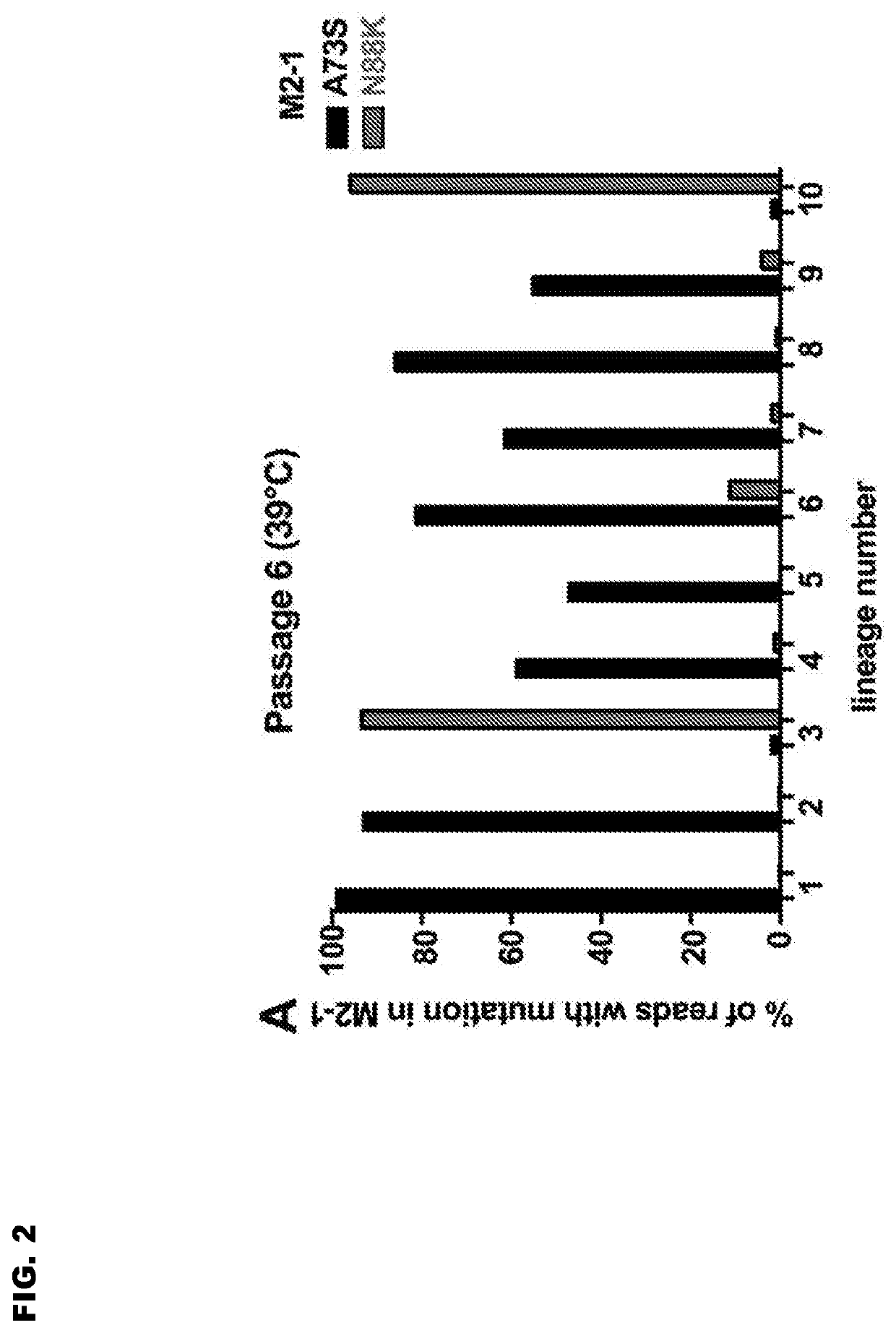Vaccine candidates for human respiratory syncytial virus (RSV) having attenuated phenotypes
a technology of respiratory syncytial virus and vaccine candidate, which is applied in the field of attenuated respiratory syncytial virus (rsv) vaccine candidate, can solve the problems of inability to commercialize rsv vaccines or antiviral drugs suitable for routine use, and inability to prevent respiratory syncytial virus infection
- Summary
- Abstract
- Description
- Claims
- Application Information
AI Technical Summary
Benefits of technology
Problems solved by technology
Method used
Image
Examples
example 1
n of the Min_L and Min_FLC RSV Constructs
[0186]The design of the CPD RSV genes and the construction and rescue of Min_L and Min_FLC have been described previously in U.S published application US 2015-0368622 and in Le Nouen et al. (2014). Briefly, previously described computational algorithms (Coleman et al. 2008 and Mueller et al. 2010) were used to design CPD ORFs based on the RSV strain A2. Min_L contains the CPD L ORF, which exhibits 1,378 silent mutations compared to wild-type (wt) L ORF. Min_FLC (for full-length clone) contained all CPD ORFs except M2-1 and M2-2, which were kept unmodified because these overlapping ORFs engage in coupled stop-start translation that depends on sequence (and possibly secondary structure) that is presently incompletely defined. Min_FLC contains 2,692 silent mutations compared to wt RSV (FIG. 1A). The amino acid sequence of Min_L and Min_FLC is identical to that of wt RSV. The viruses were constructed using the RSV 6120 backbone, which has a 112-n...
example 2
r Deoptimization (CPD) of Multiple RSV Genes Yielded a Very Stable Temperature Sensitive (Ts) Phenotype Restricted to Replication at 32-34° C.
[0187]As mentioned above, Min_FLC (for full-length clone) is a mutant in which 9 of the 11 RSV ORFs (excepting only M2-1 and M2-2) were CPD, resulting in a total of 2,692 silent mutations (FIG. 1A). Min_FLC is highly temperature-sensitive, with a shut-off temperature (TO of 35° C. for plaque formation, whereas wild-type (wt) rRSV readily forms plaques at 40° C. TSH is defined as the lowest restrictive temperature at which the difference in titer compared to that at 32° C. is reduced ≥100-fold compared to the difference in titer of wt rRSV at the two temperatures.
[0188]To investigate Min_FLC stability, a temperature stress test was employed, representing a surrogate model for genetic stability during virus replication and spread from the cooler upper to the warmer lower respiratory tract. Ten independent 25-cm2 replicate flasks of Vero cells we...
example 3
re Stress on the Min_L Virus Promoted the Emergence of Multiple Mutations in Multiple Genes
[0191]The Min_L virus in which the L ORF alone (representing 48% of the aggregate RSV ORFs) was CPD, resulting in 1,378 silent mutations (51% as many changes as in Min_FLC). Min_L has a TSH of 37° C. Ten replicate flasks were infected with Min_L and passaged serially at progressively increasing temperatures for a total of 8 passages, corresponding to 2 months of continuous culture, and 2 additional replicate flasks were infected and passaged in parallel at 32° C. as controls (FIG. 1D-E).
[0192]As expected, Min_L replicated efficiently (107 pfu / ml) at each passage at 32° C. (FIG. 1D). Sequence analysis of RNA from the control lineages at P6 by deep sequencing (FIG. 8) and at P8 by Sanger sequencing (data not shown) revealed only sporadic, low-level mutations. In the 10 lineages passaged at increasing temperature, the titers of Min_L in 9 flasks was decreased by about 20-fold at the end of P1 (37...
PUM
| Property | Measurement | Unit |
|---|---|---|
| temperature | aaaaa | aaaaa |
| temperature | aaaaa | aaaaa |
| temperature | aaaaa | aaaaa |
Abstract
Description
Claims
Application Information
 Login to View More
Login to View More - R&D
- Intellectual Property
- Life Sciences
- Materials
- Tech Scout
- Unparalleled Data Quality
- Higher Quality Content
- 60% Fewer Hallucinations
Browse by: Latest US Patents, China's latest patents, Technical Efficacy Thesaurus, Application Domain, Technology Topic, Popular Technical Reports.
© 2025 PatSnap. All rights reserved.Legal|Privacy policy|Modern Slavery Act Transparency Statement|Sitemap|About US| Contact US: help@patsnap.com



